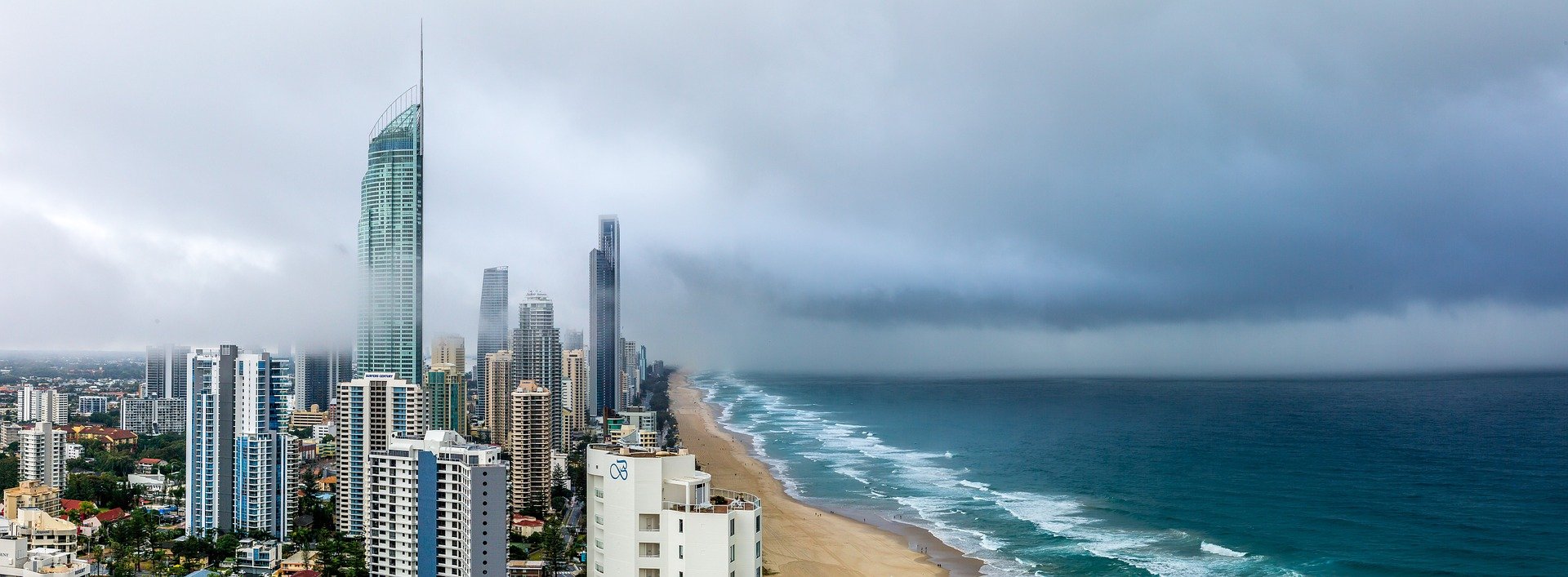Extreme weather events and increased demand for electricity show how climate change could impact energy prices in the future.
The United Nations has urged the world to act on a “code red” warning for planet Earth and immediately take action to limit global warming to 1.5 degrees Celsius compared to pre-industrial levels.
Scientists believe that if we can keep to that threshold, the world will still be sustainable until we can develop our technology further and reverse the effects of climate change in the future.
But nothing is certain. Scientists are still carrying out modelling on the worst-case scenario of a doubling of current emissions and a temperature increase of 4 degrees by 2050.
Climate change

Climate change is the long-term effects on weather and climate due to greenhouse emissions.
The world has already begun to experience its effects including more extreme weather events including killer storms, floods, drought, hurricanes, and scorching record temperatures.
Australia experienced the effects of climate change firsthand with the bushfires during the Black Summer of 2019 – 2020.
The world committed to achieving Net Zero emissions by 2050 at the 2021 COP26 summit. The target seeks to limit global warming to 1.5 degrees Celsius compared to pre-industrial levels.
In the worst-case scenario – assuming emissions double by 2050 – the earth would warm by 4 degrees celsius.
Even if the 1.5-degree target is reached, the world is expected to experience significant and dangerous change.
Climate change’s effects on electricity prices
There has been little formal study in terms of how climate change could impact energy prices, especially in Australia.
One European study forecasts the following issues that will arise in the electricity markets as a direct consequence of climate change:
- Changes in demand for electricity due to changes in the need for heating and cooling,
- Changes in the supply of hydropower due to changes in precipitation and temperature, and
- Changes in thermal power supply due to warmer cooling water and therefore lower plant efficiency.
- The complete lack of data or any scientific projections on how wind patterns may change in the future, which may adversely affect wind generation.
Hotter temperatures
Hotter temperatures are going to lead to more demand for electricity to use devices such as fans and air conditioning.
Apart from the increased demand, Australia’s aging power plants will struggle to cope with the load, leading to breakdowns and additional supply squeezes. This will drive prices significantly higher.
Flooding

During extreme rains, flooding at mines (Australia has refused to draw a line under coal) could prevent coal-fired plants from generating electricity. Rising sea levels could also render coal mines inoperable.
Severe storms
Severe storms can damage transmission infrastructure and cause blackouts, leading to massive price fluctuations. Storms accompanied by hail can also wreak havoc on commercial solar farms.
Some of the observed changes in recent decades include:
- Australia’s climate has warmed by 1.44ºC over the last 110 years.
- This warming has caused an increased frequency of extreme heat events.
- There has been an increase in the severity and length of Australia’s bushfire season.
- The number of tropical cyclones observed in the Australian region has decreased over the last three decades.
- Northern Australia has seen an increase in wet-season rainfall during the last 20 years.
- Heavy rainfall events have become more intense in some parts of Australia in recent decades, particularly in the tropics.
- Research has shown that positive phases of the SAM have become more common in recent decades.
Limitations on the electricity grid
The transition to a zero-carbon electricity grid has two key components: Generation and dispatch.
Renewable energy technology is evolving at breakneck speed and has seen prices for solar panels tumble, along with increased efficiency in inverter and battery storage technology.
However, wind and solar energy are intermittent. When the sun is not shining and the wind is not blowing, without fossil fuels, the lights would go off at night.
The problem with the transmission grid is that compared to renewable technology, it is ancient.
Energy grids were never designed to be a two-way highway, let alone an omnidirectional energy freeway. They were designed to get electricity from point A to point B, i.e. from the generator to the end-user.
Energy grids need to evolve and develop into powerful systems that can shuffle electrons near-instantly between locations of supply and demand, and a lot of large-scale batteries.
Until those capabilities are reached, renewables won’t be able to completely replace fossil fuels in the grid. And in the interim, unexpected power supply shortages will continue to be a risk.
Climate change could impact energy prices in the future – what are you doing to future-proof your energy costs?
Forward purchasing of energy on the wholesale futures market is a great way to lock in supply at a fixed rate for a fixed time.
Leading Edge can also go to tender on your behalf even if your current deal has not yet expired.
Sign up for Leading Edge Energy’s newsletter and we’ll keep you abreast with all the latest, most relevant energy news and information for commercial and industrial consumers like yourself.
Want to reduce your business’ electricity or gas costs? Our Energy Experts can guide you with that. Just give us a call at 1300-852-770 or fill out our Get Started form today.
We source, analyse, compare and rank commercial, industrial and multisite energy quotes. Obligation Free.
Chat with one of our experienced consultants today and get the insights your business needs to help manage the risks associated with volatile electricity and natural gas markets. Our energy procurement service is obligation-free and provides a time-saving way of securing lower energy rates from our panel of energy retailers.







